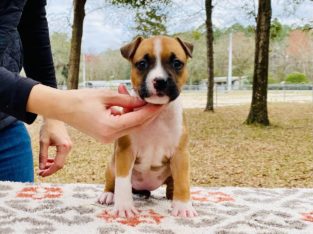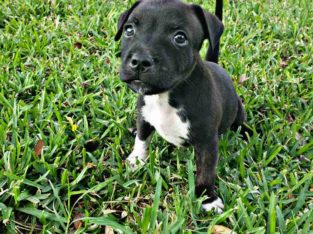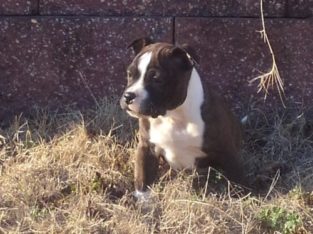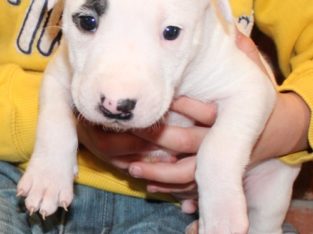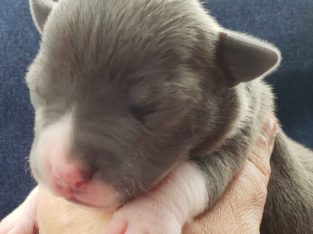Understanding the Basics: When Do Staffordshire Bull Terriers Enter Heat?
Staffordshire Bull Terriers are a popular breed of dogs due to their loyalty, intelligence, and high energy levels. However, as with all dog breeds, understanding their reproductive system and the cues for breeding is crucial for responsible pet ownership. In this article, we will discuss the basics of Staffordshire Bull Terriers’ heat cycles, including the signs of entering heat and things to consider when breeding them.
What is a heat cycle?
A heat cycle is a natural reproductive process that female dogs go through. It is also known as estrus or season, and it is the time when female dogs are receptive to mating and can become pregnant. During the heat cycle, a female dog’s body prepares for pregnancy. The heat cycle occurs in all sexually mature female dogs and typically lasts around 3 weeks.
When do Staffordshire Bull Terriers enter heat?
The age at which a Staffordshire Bull Terrier enters heat varies but can be expected around six months to a year of age. Some Staffordshire Bull Terriers may show signs of heat earlier, and others may not have their first heat until they are over a year old. The age at which a female dog first enters heat also depends on factors such as breed, nutrition, environment, and genetics.
The heat cycle has four stages – proestrus, estrus, diestrus, and anestrus. Proestrus is the first stage of Staffordshire Bull Terriers’ heat cycle, and it lasts for about 7-10 days. During this stage, the female dog’s body starts preparing for mating; she may not be interested in mating, but male dogs may be attracted to her. The female dog may also have a swollen vulva and discharge.
The second stage is estrus, which lasts for around 7-10 days. During this stage, the female dog is receptive to mating and is most likely to become pregnant. The discharge may become straw-colored during this stage. Females may display behaviors such as an increase in licking, restlessness, and whimpering.
The third stage is diestrus, which lasts for approximately two months. If the female dog becomes pregnant during the estrus stage, this is when fetal development occurs. If the female dog does not become pregnant, there will be no pregnancy, and the dog’s body will return to normal. During this stage, the discharge may cease, and the female dog may show signs of pregnancy, such as weight gain, nesting, and loss of appetite.
The fourth and final stage is anestrus. This is the period between heat cycles, and it can last around two to three months. During anestrus, the female dog’s body is not preparing for breeding, and she will lose interest in mating.
What are the signs of entering heat in Staffordshire Bull Terriers?
As previously mentioned, the first sign that a Staffordshire Bull Terrier is entering heat is a swollen vulva and discharge during the proestrus stage. The vulva may also be sensitive to touch. The discharge can range from light pink to dark red, and it may be sticky, thin, or thick.
As the heat cycle progresses, the female dog may start displaying behaviors indicating she is in heat. Some of the signs to watch out for include an increase in licking or cleaning of the genital area, restlessness, and aggression towards other female dogs. Other signs may include an increase in urine marking, an increase in vocalization, and a change in appetite.
Is it safe to breed Staffordshire Bull Terriers during their first heat?
It is not advisable to breed Staffordshire Bull Terriers during their first heat as they are not fully mature, both physically and mentally. Breeding a female dog before she is fully mature increases the risk of complications during pregnancy and can lead to health issues for the mother and puppies. It is best to wait until the female dog’s second or third heat cycle before breeding.
What should I consider when breeding Staffordshire Bull Terriers?
Breeding a Staffordshire Bull Terrier should be planned carefully, and several factors should be considered before breeding. First, it is essential to ensure that both the male and female dogs are healthy and free from genetic diseases that can be passed on to their offspring. Second, it is crucial to choose a reputable breeder who follows responsible breeding practices.
Third, it is recommended to have a veterinary consultation to ensure that the female dog is physically fit to carry a litter. The vet will check the dog’s overall health, including her hips and eyes, and advise whether breeding is a good idea. Fourth, it is crucial to provide adequate nutrition to both the mother and the puppies.
Lastly, it is important to have a plan for the puppies’ welfare, including vaccinations, socialization, and proper care. You should also check whether you are ready and able to handle the responsibilities that come with raising a litter of puppies.
FAQs
1. When should I spay/neuter my Staffordshire Bull Terrier?
It is recommended to spay or neuter Staffordshire Bull Terriers around six months of age. Spaying a female dog involves the removal of her ovaries and uterus and prevents unwanted pregnancies and health issues such as uterine infections or mammary gland tumors. Neutering a male dog involves removal of his testicles and helps to prevent issues such as prostate enlargement or testicular cancer.
2. Can Staffordshire Bull Terriers get pregnant if they mate with other dog breeds?
Yes, Staffordshire Bull Terriers can get pregnant if they mate with other dog breeds. However, mating with another breed can lead to complications during pregnancy and delivery, and it can also increase the risk of genetic diseases in the offspring.
3. How can I tell if my Staffordshire Bull Terrier is pregnant?
The signs of pregnancy in Staffordshire Bull Terriers include decreased appetite, swollen nipples or mammary glands, weight gain, and increased size of the dog’s abdomen. An ultrasound performed by a veterinarian can confirm pregnancy, and X-rays can be done after day 45 to determine the number of puppies.
4. Can Staffordshire Bull Terriers have litters twice a year?
It is not recommended to breed Staffordshire Bull Terriers more than once a year. Breeding a female dog more frequently than this can lead to health issues such as prolonged labor, uterine infections, and reduced litter sizes. It is essential to prioritize the wellbeing of the mother and puppies when breeding.
Conclusion
In conclusion, understanding Staffordshire Bull Terriers’ heat cycles is essential for responsible pet ownership, and it can also help to prevent unwanted pregnancies and health issues. Knowing the signs of entering heat, what to consider when breeding, and other facts outlined in this article, can help you make informed decisions about your Staffordshire Bull Terrier’s reproductive health. Remember, always consult with your veterinarian before making any decisions regarding your dog’s breeding.

